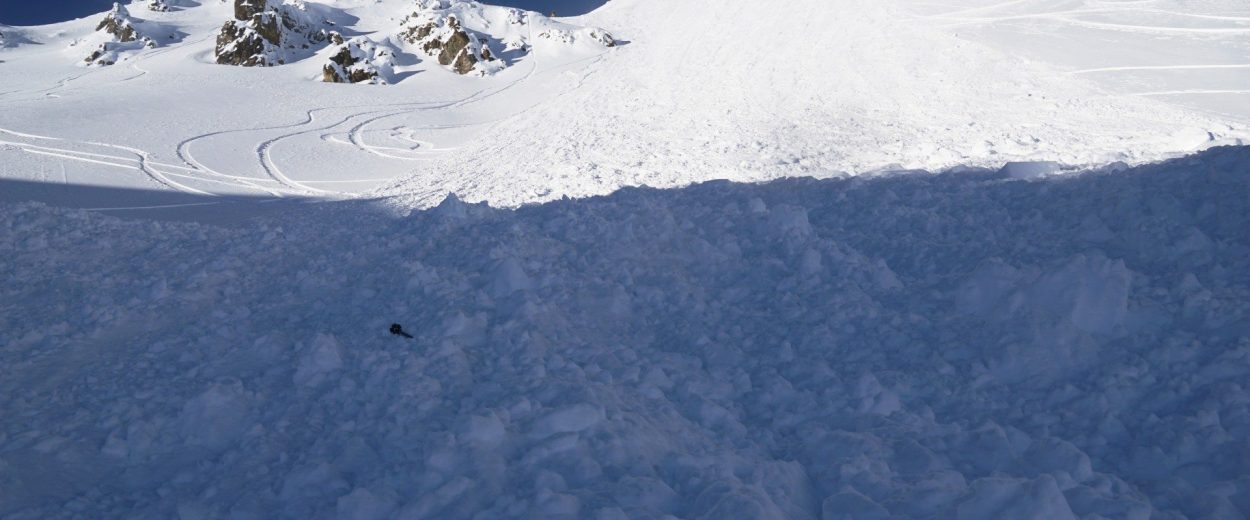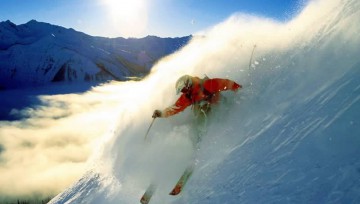How Risky is Ski Cutting?
 We all know an avalanche practitioner who has suffered the misfortune of being caught in an avalanche when ski cutting a slope.
We all know an avalanche practitioner who has suffered the misfortune of being caught in an avalanche when ski cutting a slope.
Top of mind is Whistler’s avalanche guru and blogger Wayne Flann pictured above in his slide path. Flann commented on his accident, “I looked across the slope, decided on my ski cut and headed out, while the rest of the group remained in a safe area. But halfway across the slope, I skied into some softer snow and struck a rock, which momentarily put me off balance. In an instant, I was heading downhill in a fast-moving stiff slab. I headed off to the right, watching my tips reach solid snow, but then the rushing torrent of snow caught the tails of my skis. I was turned 360 degrees up in the air. In the midst of this all, I felt my left femur spiral and facture. I was like a dry stick compared to the force being generated by the fast moving avalanche.”
Flann survived the class 2 to 2.5 slide, read more about his accident here. Unfortunately not all avalanche practitioner outcomes are as fortunate as his.
Here is a new video featuring highlights of a new paper on the risks associated with ski cutting by Bruce Jamieson. The video is based on a paper by Bruce Jamieson, co-authored by Karl Birkeland, Mark Vesely, Ilya Storm and John Stimberis—these guys are the experts.
Comments on another reasons why ski area practitioners have fewer incidents than mechanized (snowcat and helicopter) and best practices include:
— the ski cut routes and procedures in ski areas are pre-established, and most likely the technique/approach for a given piece of terrain is mentored. Snowcat and helicopter guides are likely doing much “ad-hoc” ski cutting with more unknowns and less planning.
— the slope history is documented in more detail at a ski area then a guiding operation allowing for more informed decision making and therefore safer ski cutting practices.
— advocate for a ski cut as a final “best practice” before committing to certain terrain features. It has always felt a ski cut to be a good way to ease into terrain, have a good look down the fall line and conduct a last relatively low commitment slope test before committing.
Jamieson commented that they stopped short of best practices in paper, which probably vary between sectors. However, they hope these risk estimates make it easier for others to write and talk publicly about best practices.
Researchers like Jamieson and his co-authors have invested years in making powder skiing and boarding safer for avalanche practitioners and the public. We thank you for your dedication and great work!










Comments